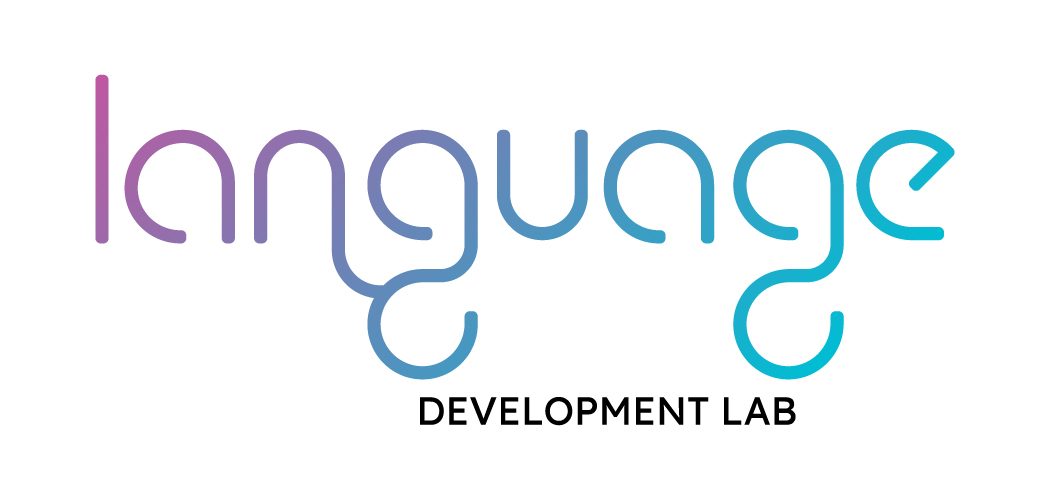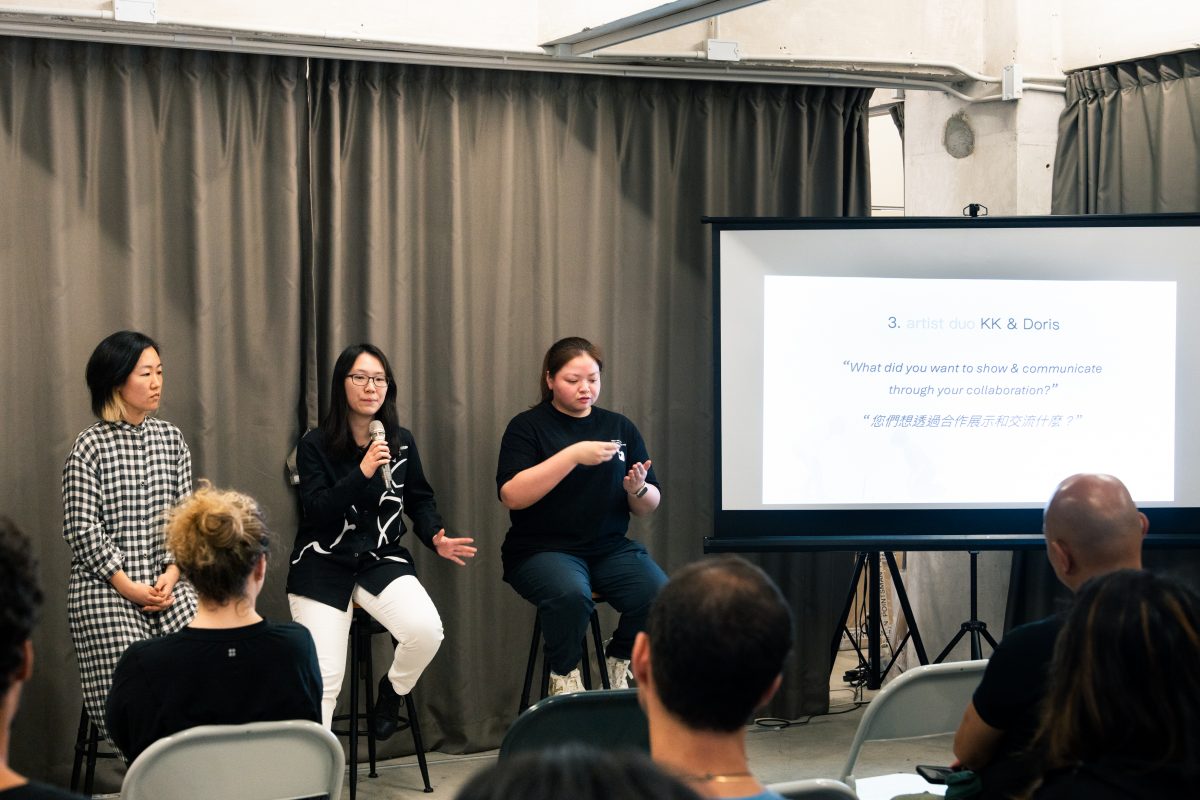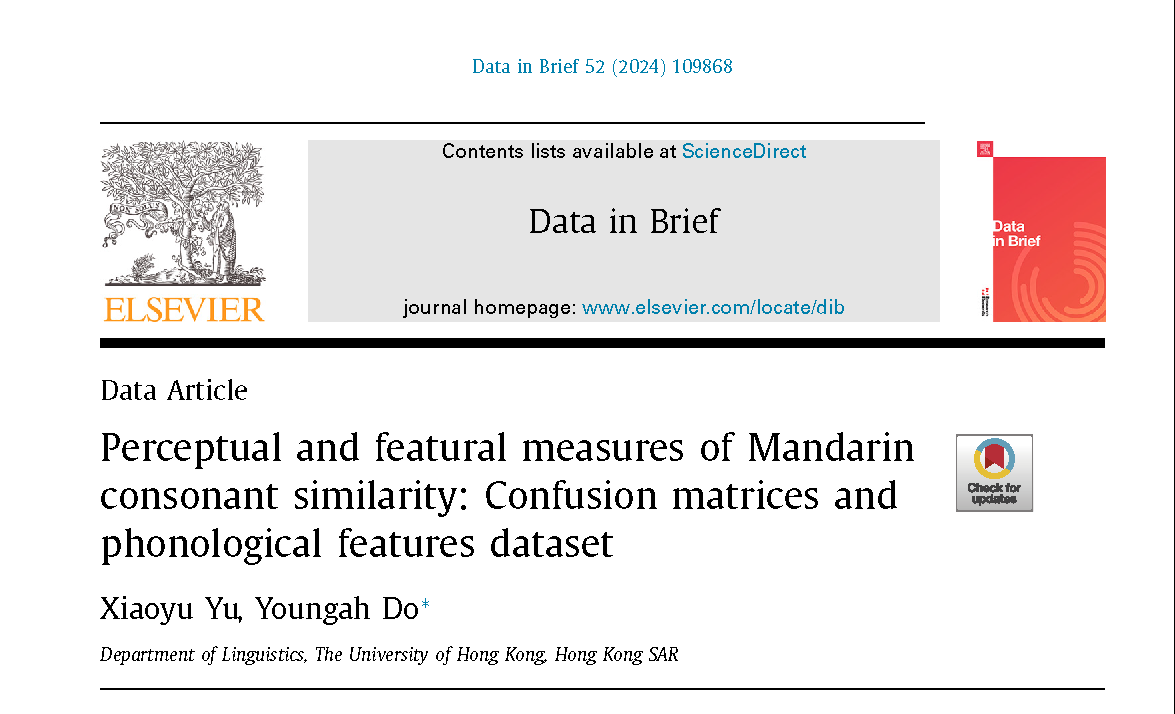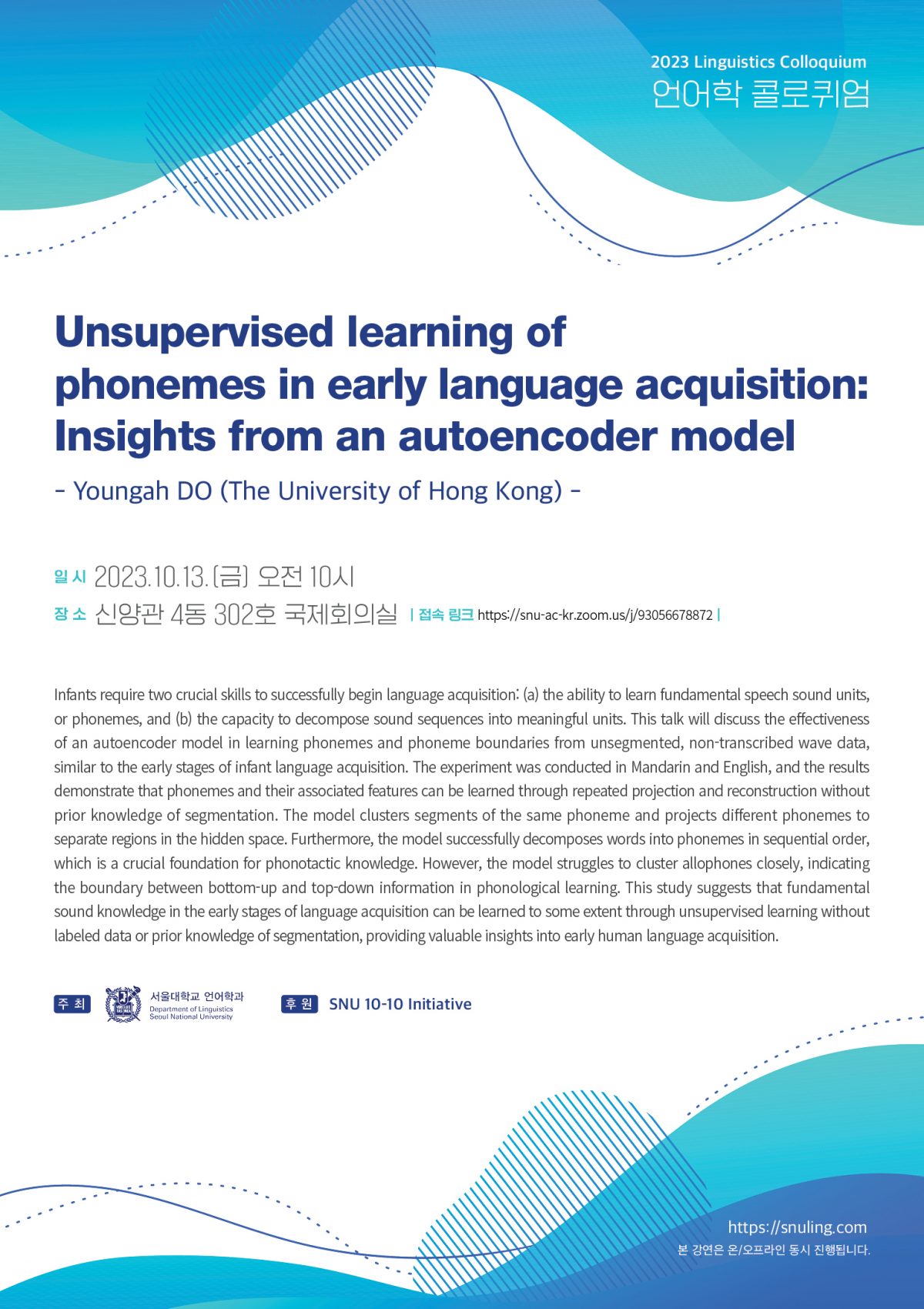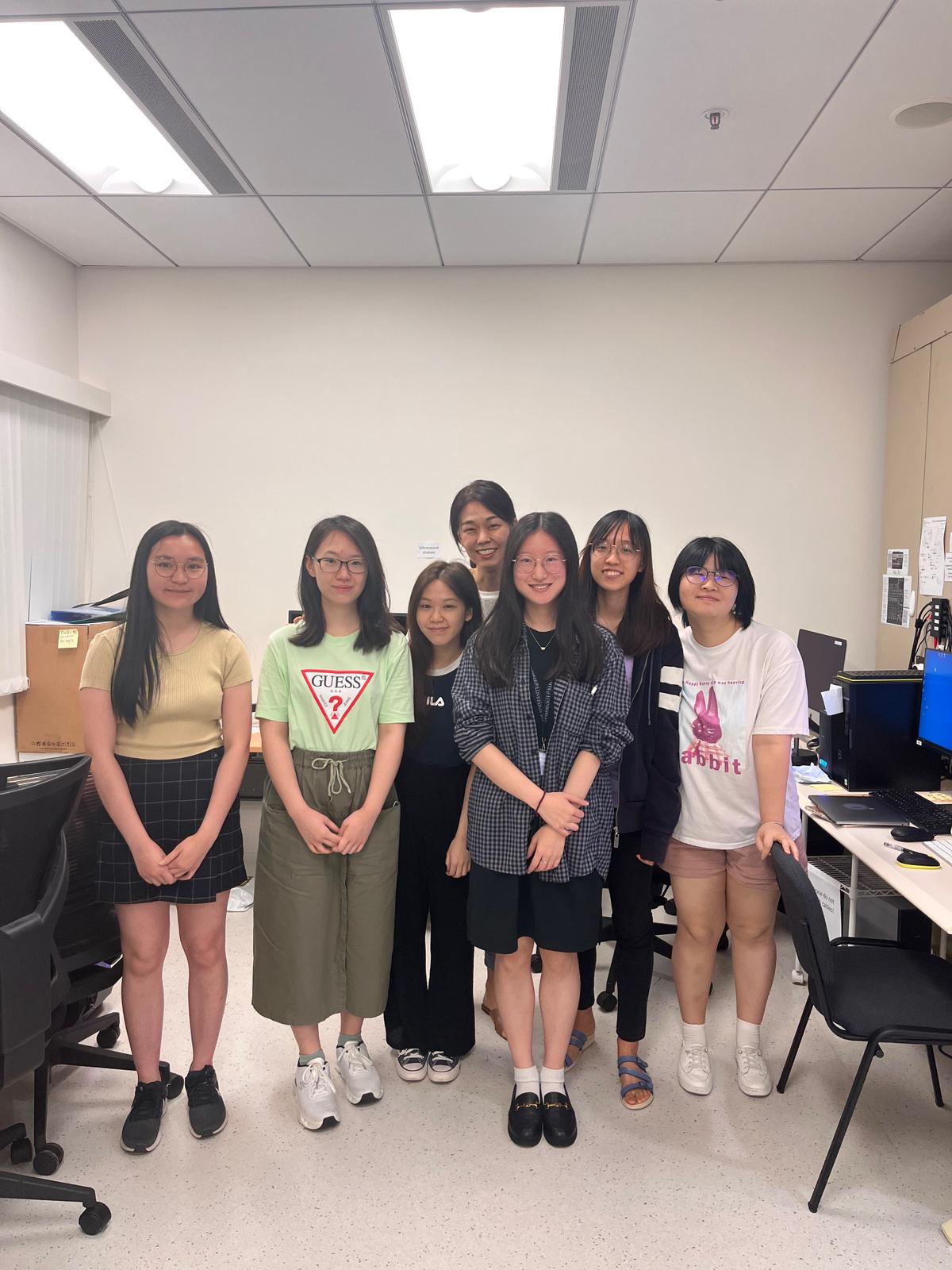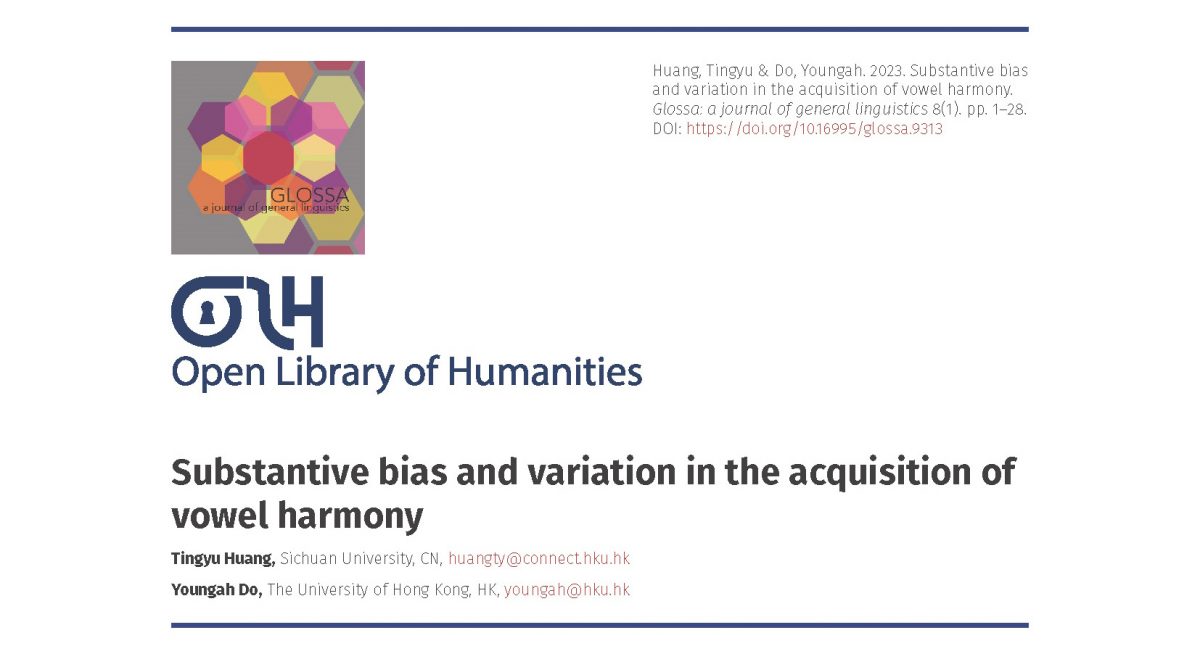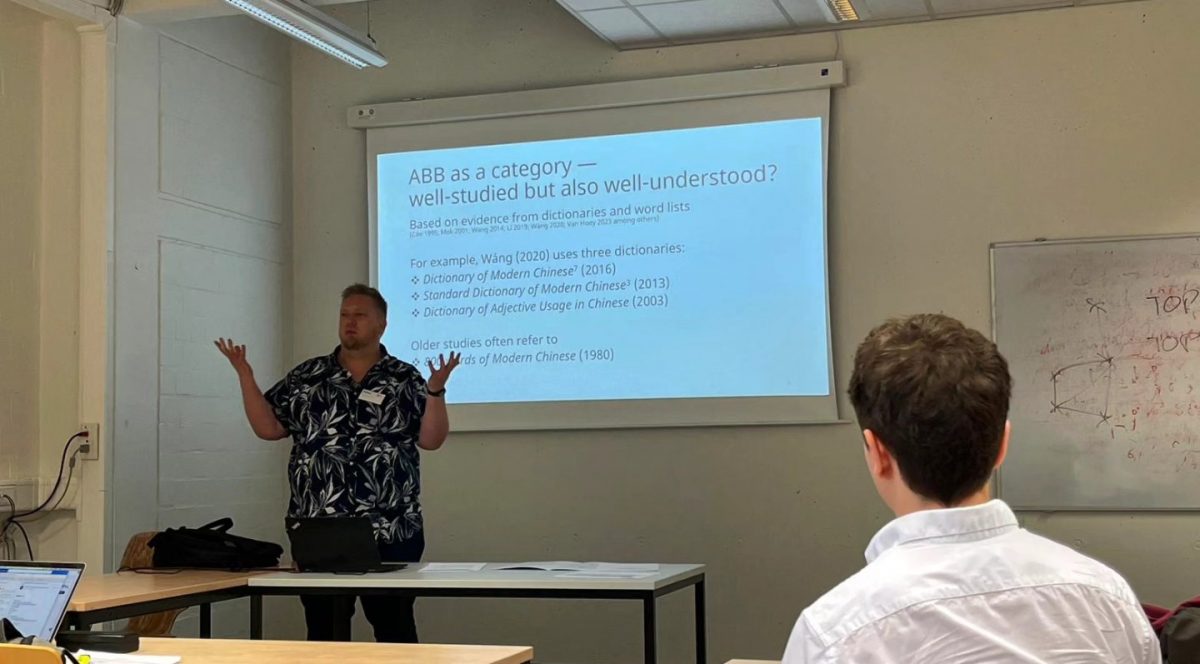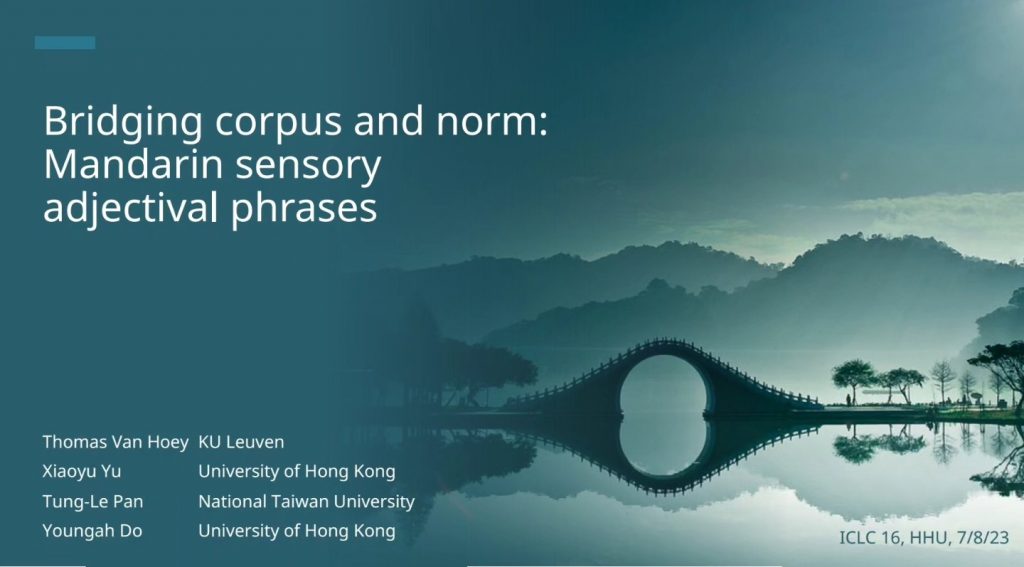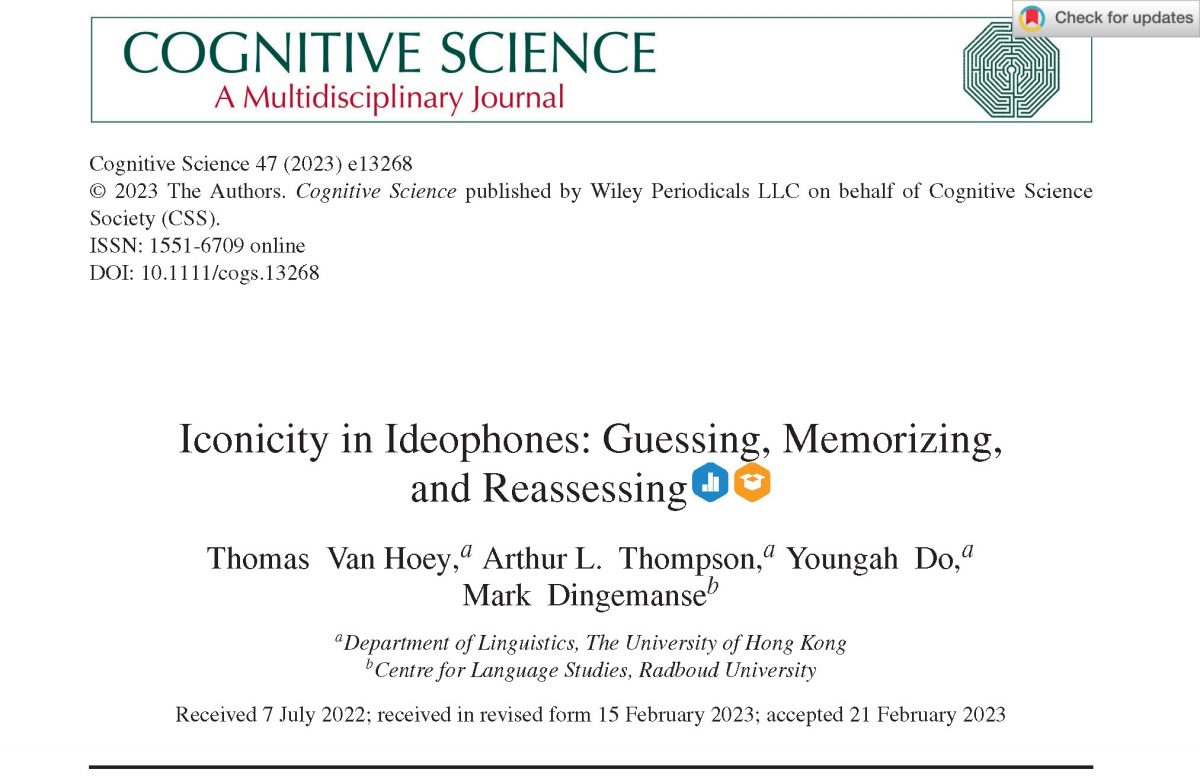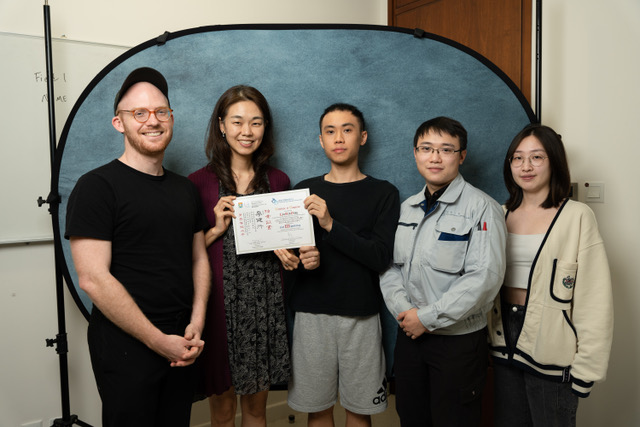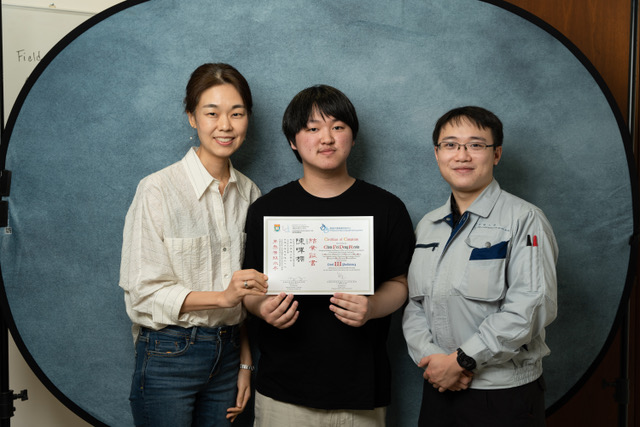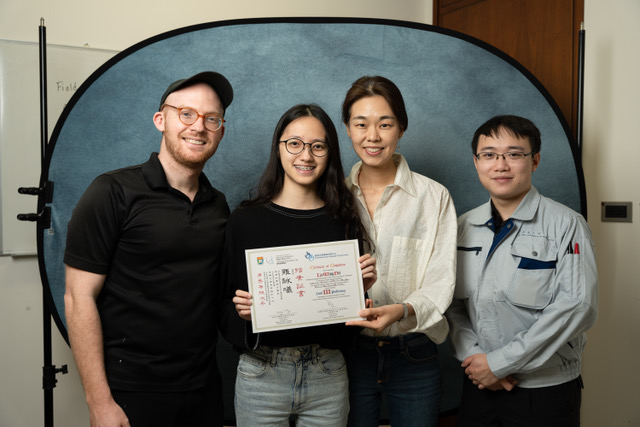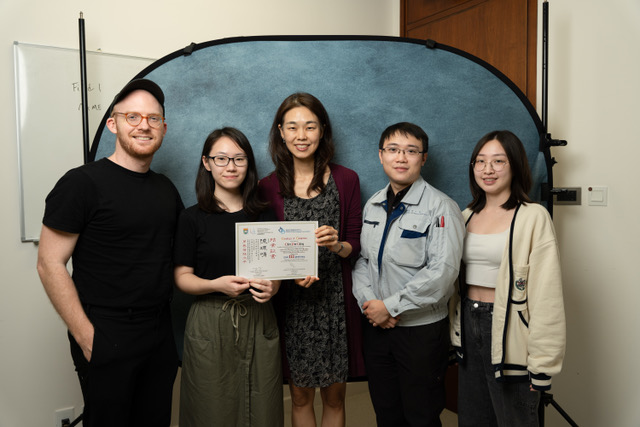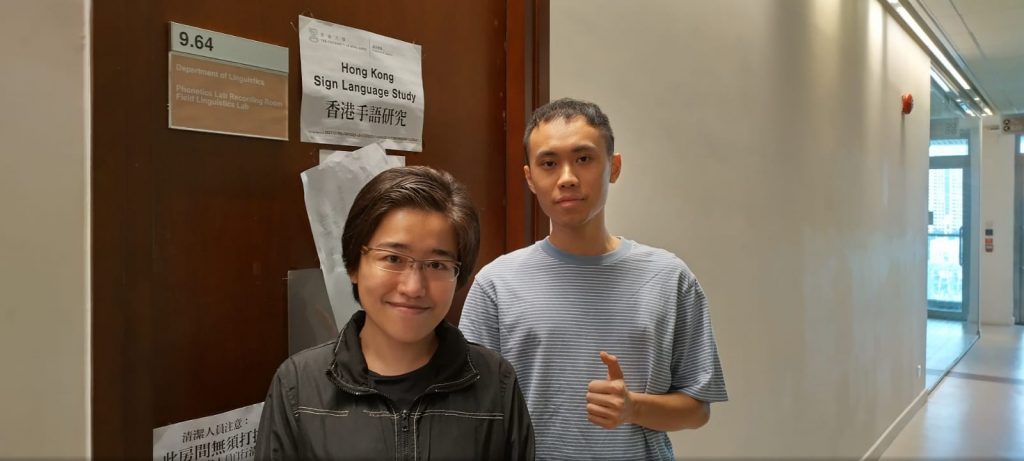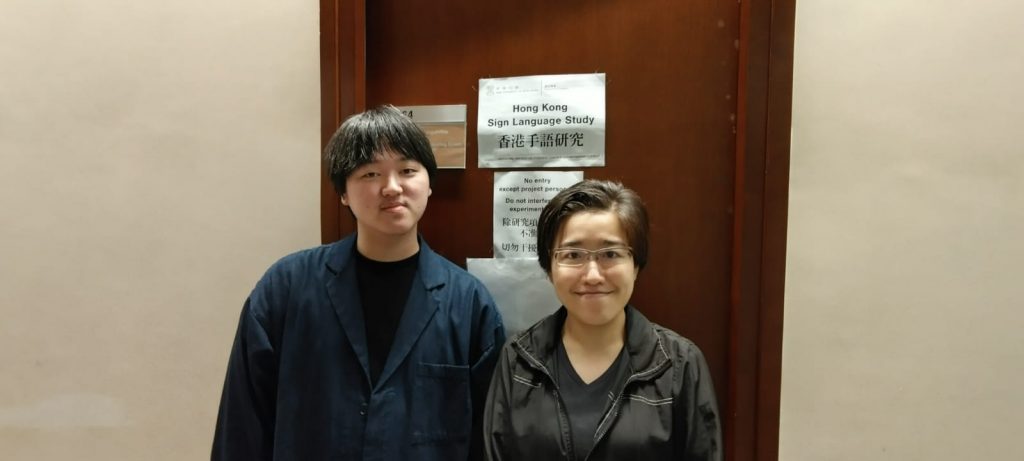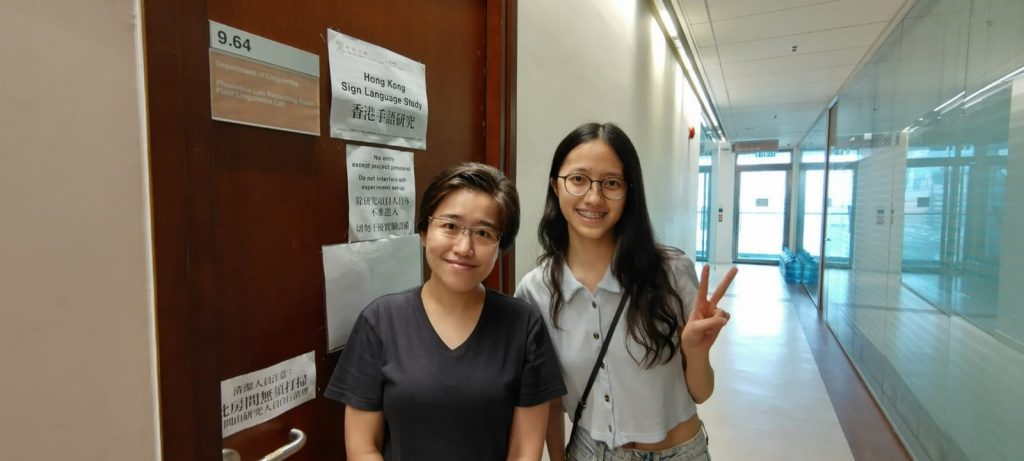Student Research Assistants from the University of Hong Kong’s Language Development Lab immerse themselves in the world of Deaf and Hearing artists at the Point Line Mean Exhibition.


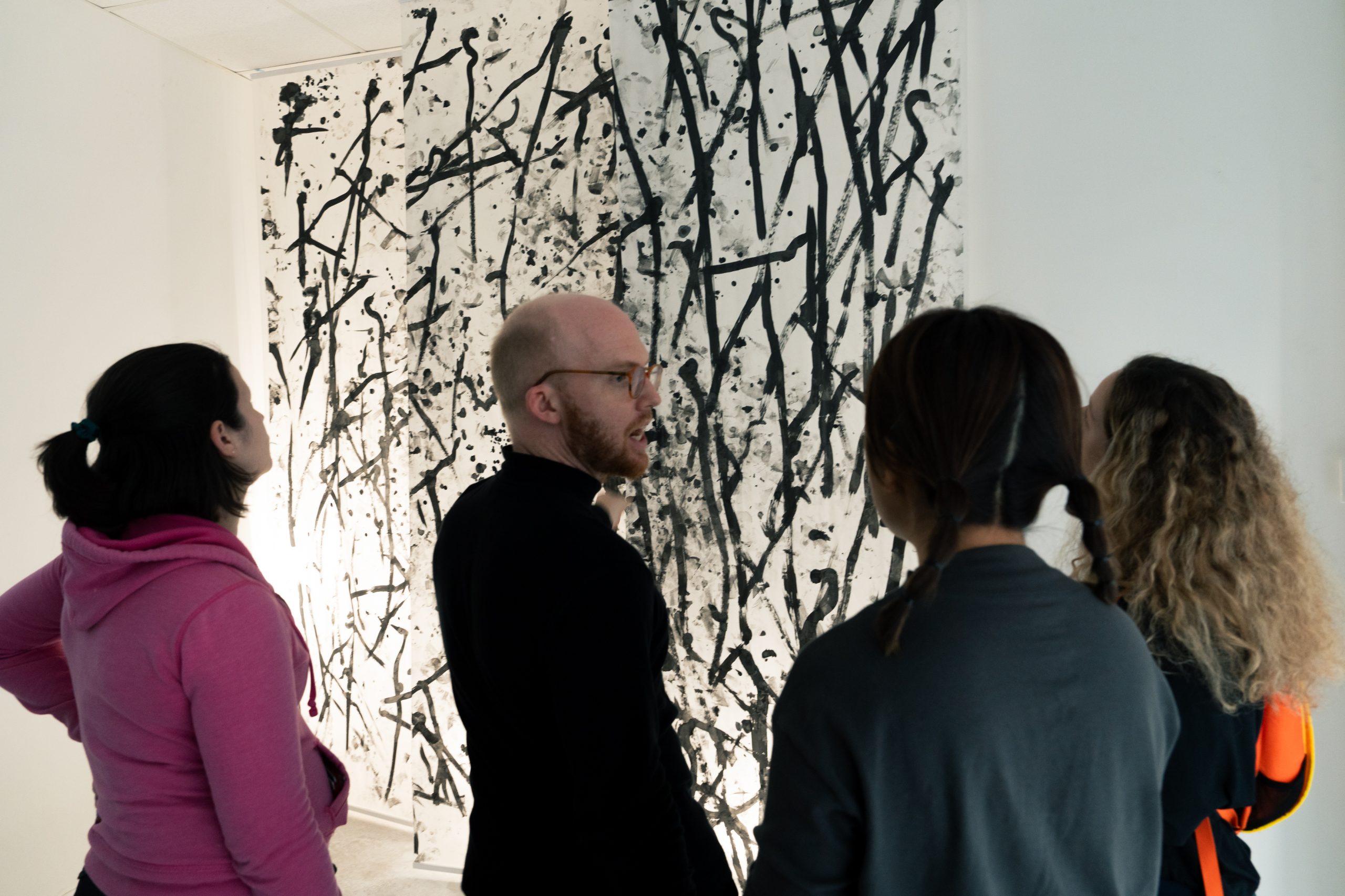
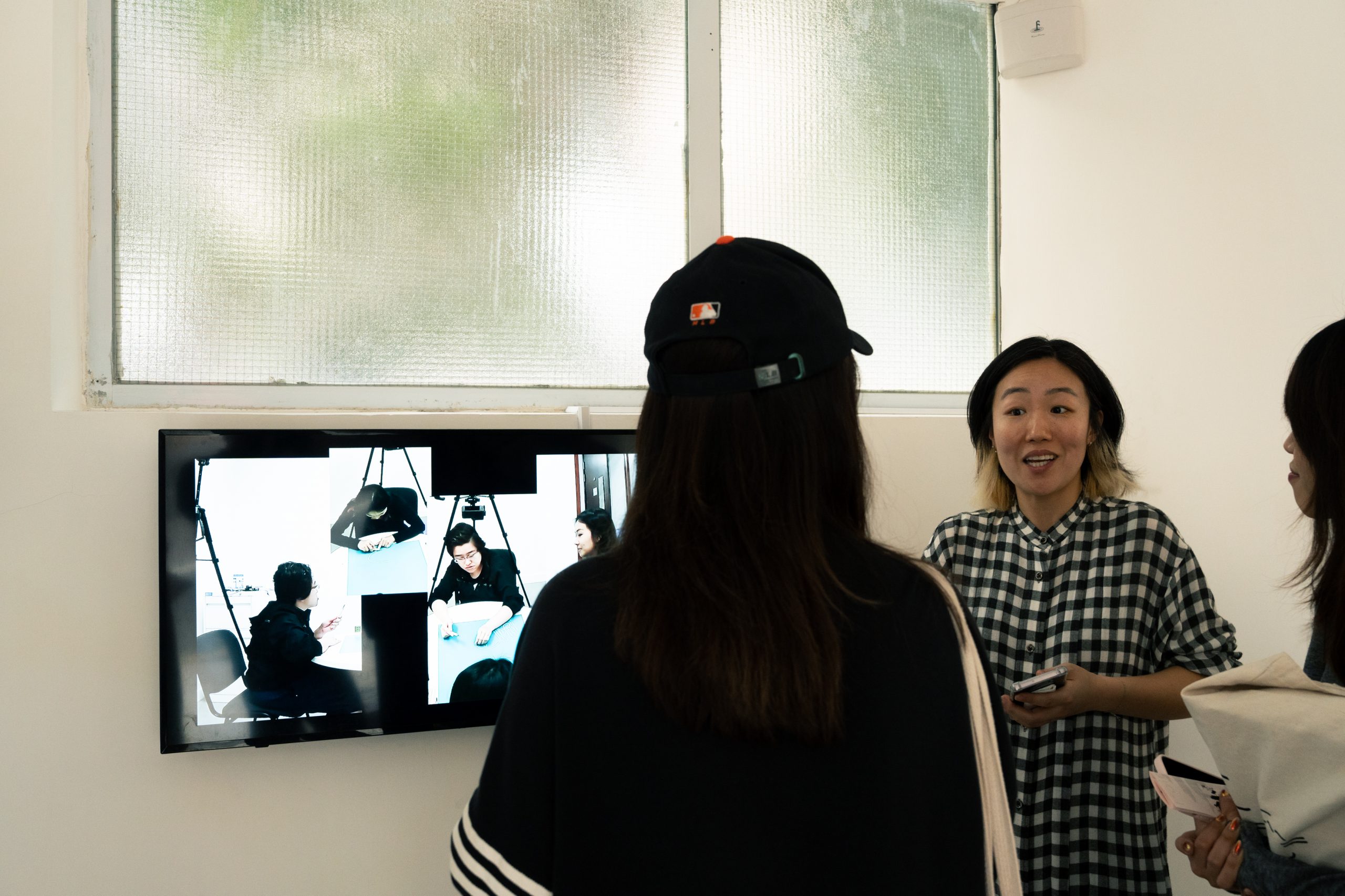

As part of the Knowledge Exchange project on Hong Kong Sign Language, our Student Research Assistants (SRAs), Hannah, Kevin, Rachel, and Joanna, serve as docents in the “Point Line Mean” exhibition currently underway at Hart Haus in Kennedy Town.
This unique exhibit explores communication and understanding across divides, particularly between the Deaf and hearing worlds. It features the works of six Hong Kong-based artists, including two familiar faces within LDL: KK, who has served as our Hong Kong Sign Language Consultant, and Arthur (何明偉), a postdoctoral researcher at our lab.
Two of the exhibits were even produced within the Department of Linguistics’ Fieldwork Room, highlighting the close collaboration between the artists and the university.
SRAs Become Docents and Bridge the Gap
A dedicated team of SRAs – Hannah, Kevin, Rachel, and Joanna – took on the role of docents for the exhibition. To prepare for this exciting task, they familiarized themselves with the artwork and the messages conveyed by the artists. This involved not only understanding the pieces themselves but also learning about Deaf culture and the intricacies of Hong Kong Sign Language.
Equipped with this knowledge, the SRAs were able to effectively communicate with the artists throughout the exhibition, using both spoken and sign languages. This fostered a truly immersive experience for the SRAs, allowing them to become deeply involved with the Deaf community and its artistic expression.
Guiding Visitors Towards a Deeper Understanding
The SRAs’ role extended to guiding visitors through the exhibition. By providing insightful explanations and fostering open discussions, they helped visitors gain a richer understanding of the artwork and the Deaf experience. This valuable contribution no doubt played a significant role in the success of the “Point Line Mean” exhibition.
The LDL is thrilled to have our SRAs play such a vital role in this important project. Their dedication and willingness to learn have not only enhanced their own knowledge and perspectives but have also enriched the experience for visitors to the exhibition.
Point Line Mean
HART Haus G/F (G/F, Cheung Hing Industrial Building, 12P Smithfield Road, Kennedy Town)
Bridge of Signs documentary Special Screening
27 April 2024 (Sat)
5PM to 6PM
HART Haus 4/F (4/F, Cheung Hing Industrial Building, 12P Smithfield Road, Kennedy Town)
